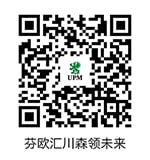EU regulation opens doors
“For the first time, side streams will be included in the EU regulation and the production of fertilisers derived from organic materials will especially become easier,” says Titta Berlin, Ministerial Adviser at the Finnish Ministry of Agriculture and Forestry.
Side streams have long been part of the national act but, according to Berlin, the structure was outdated and hindering innovation – now the law complies with EU regulations. “Before, new ingredients were strictly categorised by specific usage. Now, creating products and mixing different ingredients is more flexible,” Berlin explains. “However, keeping the level of toxic contaminants in check will remain constant.”
The legislation came at a convenient time, as Europe aims to reduce its dependency on imported fertilisers. But what are the actual possibilities of recycled nutrients? In Finland, the production of recycled fertilisers has been a local business and it has never been particularly lucrative. But current world events might change that.
Locality and overall sustainability
So what is hindering the industry from tapping into the potential of recycled fertilisers? “Using side streams in the production of fertilisers is highly regulated, and rightfully so. Forest industry side streams are not that high in nutrients and companies need to consider the total costs and benefits,” says Aaron Vuola, Manager of the Circular Economy and Environment at the Finnish Forest Industries Federation (FFIF).
However, for the circular economy product to be sustainable, all the pieces of the puzzle must be considered, notes Vuola. For example, the transportation of fertilisers produces emissions that can annul the total sustainability of the product. “As circular thinking becomes stronger, processes can be designed according to the principles of sustainability from the get-go. Companies can, for example, recycle the nutrients from their side streams and use them in their effluent treatment plants,” he says.
“The price of circular economy products used to be more expensive compared to products made of virgin materials, but this has perhaps changed permanently,” says Anna Virolainen-Hynnä, Executive Director at Finnish Biocycle and Biogas Association. She suggests that instead of transporting fertilisers across borders, importing agriculture products and the nutrient recycling know-how could be a sustainable business opportunity in the years to come.
Will the potential be harnessed?
From the Finnish government to companies like UPM, many are looking for new ways to capitalise upon and harness the potential of side streams. New techniques to eliminate toxic contaminants could be one way to make better use of them.
“As the cost of mineral-based fertilisers continues to soar, the less nutritious organic fertilisers might become more appealing,” predicts Berlin. “Right now, recycled fertilisers are selling like hotcakes.” But there are still several other factors that have a bearing on the matter.
“The new legislation gives opportunities, but it’s still unclear how the market will react,” Virolainen-Hynnä cautions. “We need investments and companies that are ready to take the leap to create quality products.”
Circular bioeconomy at UPM
Our goal is to minimise waste, maximise the utilisation of side streams and create added value through smart solutions. In response to climate change, we are actively developing new ways to accelerate the transition to a circular bioeconomy and aim to continuously reduce our environmental impact.
By 2030, we will not deposit any process waste at landfill sites, and no process waste will be incinerated without recovering the energy. On average in 2021, 89% of our process waste was recycled or recovered, of which over a fifth was energy recovery. Today, 59% of our production sites already fully use all the process waste. Our other circularity target is the 100% use of nutrients from recycled sources in our effluent treatment by 2030. In 2021, 35% of the nutrients that we used were from recycled sources (UPM Annual Report 2021, pages 88 -91)
Together with our partners, we make use of residues, side streams and recovered materials in the creation of circular innovations. Our new sustainable product design concept includes circularity aspects throughout the product lifecycle and our environmental 2030 targets ensure resource efficiency and contribute to the UN Sustainable Development Goals.
Read more
Main image: Industrial side stream fertilisers enable a circular ecosystem for mills and agriculture
